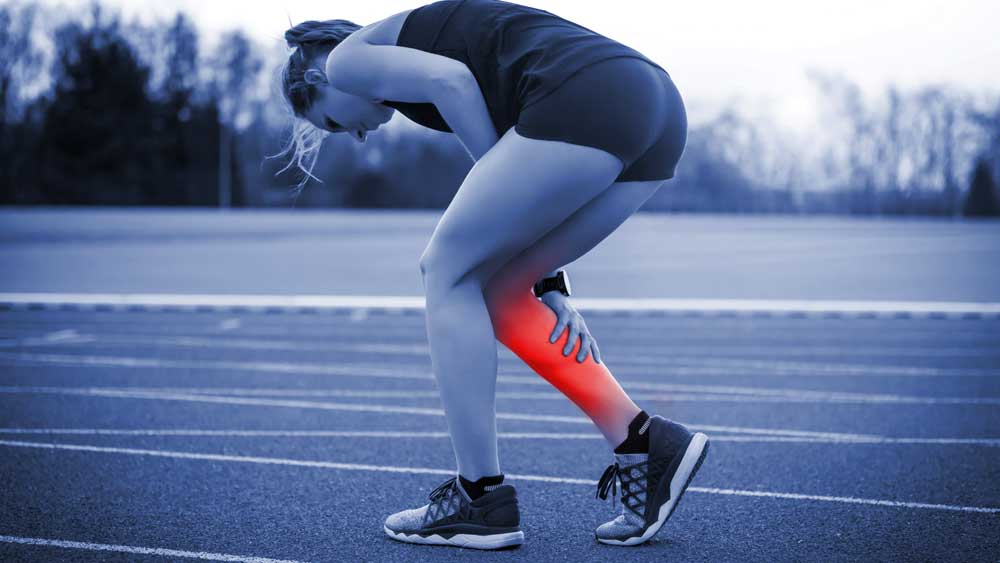[et_pb_section fb_built=”1″ _builder_version=”4.6.5″ _module_preset=”default” custom_padding=”0px||0px||true|false” hover_enabled=”0″ sticky_enabled=”0″][et_pb_row _builder_version=”4.6.5″ _module_preset=”default” hover_enabled=”0″ sticky_enabled=”0″][et_pb_column _builder_version=”4.6.5″ _module_preset=”default” type=”4_4″][et_pb_text _builder_version=”4.6.5″ _module_preset=”default” hover_enabled=”0″ sticky_enabled=”0″]Did you know that in the United Kingdom, ankle sprains affect between 52.7 to 60.9 per 10,000 people? What’s more, that number is only for those who attend accident and emergency units!
Worse, 14% of those injuries are of the “severe” kind. Overall, experts estimate that 42,000 severe ankle sprains occur each year in the nation.
As if the pain’s not enough, ankle sprains can also result in your leg muscles becoming stiff.
But leg stiffness doesn’t just arise from ankle sprains. Overworking your legs—or not using them enough—can also lead to tightly-wound leg muscles. Musculoskeletal disorders can also be a culprit.
Ready to learn more about these top causes of muscle tightness and pain in the legs? Then keep reading, as that’s exactly what we’ll share in this post, plus tips on how to ease the symptoms!
Sprains
A sprain is a type of soft tissue injury that affects a ligament. It occurs due to the overstretching or even tearing of this tough band of fibrous tissue. The ligaments that connect the leg bones to the foot bones are the most common location for sprains.
In fact, ankle sprains account for 3% to 5% of all UK emergency department visits each year. That translates to 5,600 ankle injuries every day.
An ankle sprain can result from a sudden rolling or twisting of the foot. This forces the ankle joint to move out of its proper position, which can then cause joint stiffness. The stiffness can radiate up to your legs, so you might also feel some tightness in your lower leg muscles.
A knee sprain can also cause tight muscles in the legs. This usually occurs due to a sudden turning, twisting, or pivoting of the legs.
It’s most common among athletes, especially those who play football and basketball. In fact, a study found ACL (anterior cruciate ligament) injuries in 50% of football players.
Strains
A strain occurs due to the overstretching or tearing of tendons or muscles. Strains can affect any muscle, but the hamstring — the muscle behind the thigh — is one of the most prone to such injuries.
Common symptoms of strains include pain and limited movement in the affected area. The injured muscle can also become stiff, weak, and give you a “knotted-up” sensation. The skin around the affected muscle can also become bruised, discoloured, or swollen.
Exercise or Physical Activity
In the UK, over a third of adults don’t exercise enough. And when they do exercise, they can suffer from leg stiffness.
Stiffness in your legs can occur when you suddenly make your leg muscles work harder than normal. If exercise isn’t part of your normal routine, your muscles aren’t prepared for the hard labour. So, making them undergo rigorous activity forces them to work harder.
This added strain causes microscopic tears in the muscle fibres. These tiny injuries are responsible for the stiffness or soreness after exercising.
Musculoskeletal Conditions
25% of UK adults suffer from one or more of the 200 different types of musculoskeletal conditions. Some, such as arthritis and fibromyalgia, can cause leg stiffness and numbness.
Experts estimate that arthritis alone affects 10 million people in the UK. Osteoarthritis and rheumatoid arthritis are the two most common types of arthritis. They cause the joints to become inflamed, leading to pain and stiffness in the affected area. OA and RA sufferers usually feel the most stiffness in the morning.
Fibromyalgia may not be as common as arthritis, but it still affects an estimated 1.5 to 2 million people in the UK.
What’s more, it doesn’t only cause localised pain — its symptoms are widespread. Aside from leg stiffness, it also often causes sleep problems, fatigue, and mood issues.
Treating Leg Stiffness at Home
Many cases of leg stiffness caused by sprains, strains, and exercise are treatable at home. These home treatments include the RICE method, massages, and stretching.
RICE Therapy
RICE stands for rest, ice, compression, and elevation. You need to rest your legs and avoid putting weight on it for the first two days. This will give your injured soft tissues enough time to recover and repair.
Ice packs are usually better for reducing pain and inflammation in the legs. Whereas heat is often a better option for muscle tightness.
Compression is the process of wrapping an injured body part to keep it from swelling. You can use an elastic medical bandage to wrap and “compress” your legs with. Be sure that it’s snug but not overly tight that it may disrupt the flow of blood.
Elevate your stiff legs so that they’re a bit higher than the level of your heart. This will help ease the pain, swelling, and stiffness, especially if you have an ankle sprain.
You can simply prop your affected leg up on a couple of pillows while sitting or lying down. It’s even better if you have a sofa chair massager, which can also help with neck, shoulder, and back pains.
Massage
Delayed onset muscle soreness (DOMS) often causes muscle stiffness, especially in the legs. According to researchers, vibration and massage therapies can ease the symptoms of DOMS. They also found both treatments to be effective in restoring concentric strength.
A more recent study also looked into the effects of vibration and massage therapies on DOMS. The researchers found that both treatments alleviated the patients’ symptoms. They also found both therapies to help improve muscle performance.
Massages can also help raise your hamstring’s stretch tolerance. The more tolerant it is to stretching, the lower its risk of becoming strained.
One of the best ways to incorporate massages into your stiff leg treatment is to use a portable massager. These devices provide enough vibrations to relax and unwind your tight leg muscles. Your legs will feel less stiff and sore, and you’ll be able to get back on your feet again.
Also, since they’re portable, you can use them on various aching parts of your body.
Make That Stiff Leg Working Right Again
As you can see, there are many possible reasons for leg stiffness. From sprains to strains to overworked muscles, all these can make your leg less mobile. With proper treatment though, you can melt away that stiffness and move about without a limp.
Interested in getting your very own massager at home? Then feel free to browse our e-store![/et_pb_text][/et_pb_column][/et_pb_row][/et_pb_section]




